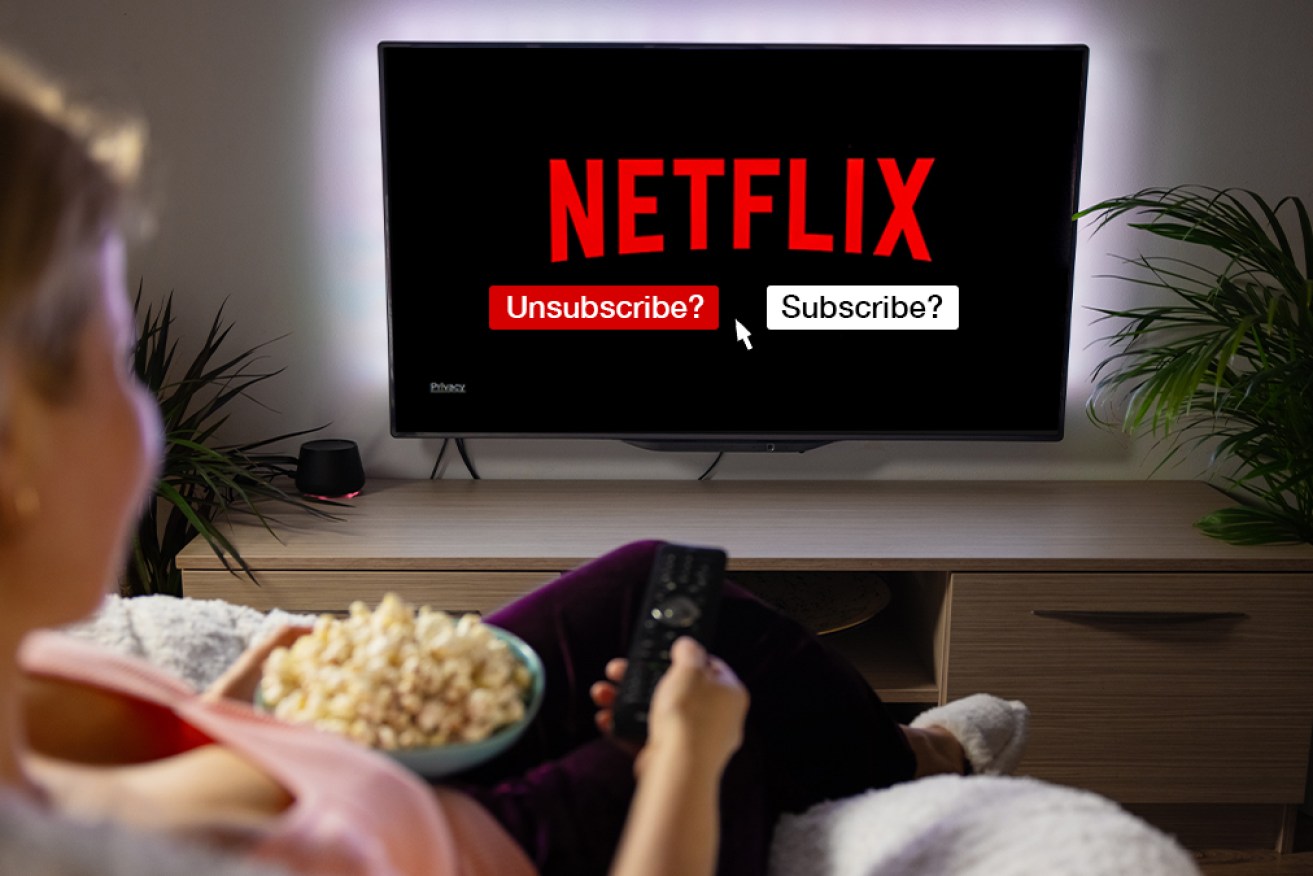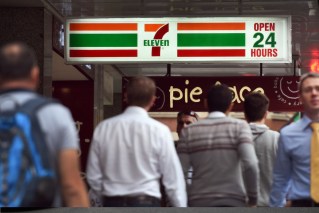Ads break Netflix binges as streaming services fight for profits


Netflix has rolled out its long-promised crackdown on password sharing in Australia. Photo: TND/Getty
Picture this: The cliff-hanger of your favourite whodunnit has you on the edge of your seat when the biggest crime of all is committed right there in your lounge room.
Your binge session is suddenly and rudely interrupted by up to five minutes of advertisements – and you can’t even press skip.
It’s almost like watching actual television. The horror!
The upside (apart from being a toilet break or a moment to mull over whether you actually need to watch that tenth episode) is you’ll be able to trade your attention for a few extra dollars in your account at the end of the month.
Netflix is about to find out whether its new ad system will pay off – or whether Australian viewers will switch off.
The introduction of advertisements comes as a complete backflip from Netflix co-chief executive Reed Hastings, who was previously against introducing advertising on the streaming platform before changing his tune after Netflix suffered its first subscriber loss in more than a decade this year.
“Those who have been following Netflix know that I have been against the complexity of advertising and a fan of the simplicity of subscription,” he said at the time.
“But I’m a bigger fan of consumer choice – and allowing consumers who would like to have a lower price and are advertising-tolerant get what they want makes a lot of sense.”
Marc C-Scott, senior lecturer in screen media at Victoria University, told The New Daily the ad-tier, which costs $4 less per month than the next tier up, could attract new subscribers, or pre-existing subscribers looking to tighten their belts.
“It’s going to give [Netflix] an edge to gain those subscribers that are on the fringe,” he said.
Making its Australian debut on Friday, the advertisement-supported offering will cost subscribers willing to sit through up to five minutes of unskippable ads per hour $6.99 a month.
Disney+ and Binge are set to follow suit and offer cheap ad-supported plans from next month and next year, respectively.
Other companies will be watching to see whether these ad-tiers will succeed or flop as the sector hunts for more ways to make money.
Streaming platforms chasing profits
A report from regional consultancy Media Partners Asia found Australia had more than 22 million premium video subscribers as of August, up almost three million year-on-year.
Netflix claimed the most subscribers, with Disney+ and Prime Video sharing second place, followed by Foxtel (including Kayo, Binge and Foxtel Now) and Stan.
The success of Netflix comes despite the fact it lost almost one million subscribers over the second fiscal quarter.
The company was nearly happy with the reported loss, not just because the figure fell short of the two million subscribers they expected to lose, but also due to the fact Netflix’s average revenue per membership rose 7 per cent over the past year, largely driven by membership price hikes and the appreciation of the US dollar.
MPA executive director Vivek Couto said streaming investors are increasingly focused on improved monetisation and profitability.
“Netflix, Binge, Kayo and Stan have all raised prices over the past year and lower-cost, ad-supported tiers are expected from Netflix, Disney+ and potentially Amazon as platforms look to unlock new revenue streams,” he said.
Maturing sector
Amanda Lotz, professor at Queensland University of Technology’s Digital Media Research Centre, said the change in focus from streaming platforms has been a long time coming.
“We’ve been focused on number of subscribers rather than profitability for too long, so the pivots that are happening make sense,” she said.
“We’re just entering a more mature phase of the business.
“The investor has really been trying to support early stage growth, and I think now we’re in a process of figuring out how we make these profitable businesses.”
Dr Lotz said the changing focus will have implications for services such as Disney+, which has traditionally only offered one subscription plan for $11.99 per month, or $119.99 per year.
Along with adding a cheaper ad-supported tier to lure more subscribers, Disney+ will raise the price of its normal plan next month.
Platforms forced to shake things up
The streaming sector will likely get smaller as pre-existing television networks or film studios take their content away from affiliate streaming companies to create their own platforms (as seen with Disney+ and Stan), putting more pressure on solely-streaming platforms.
Dr C-Scott said with more competitors entering the market, platforms such as Stan have looked to diversify their offerings.
After Disney pulled its content off Stan in 2019 in the lead-up to the launch of Disney+, the Australian streaming platform debuted Stan Sport in 2021, joining Kayo and Foxtel in offering sport to Australian subscribers.
“The key in the marketplace is, are you providing something of value for consumers? And are you providing something you can’t get anywhere else?” Dr Lotz said.
“Is there room for both Stan and Binge? Probably not.”
But with the sector still so young, she said it’s still to be seen whether all the larger corporations will find success with their own streaming platforms, or will give up and sell off their library of content again to affiliate streaming companies.
“The economics of this new order haven’t been sorted out yet,” she said.
“We’re five years away, at least, from understanding what this is going to look like long term.”








